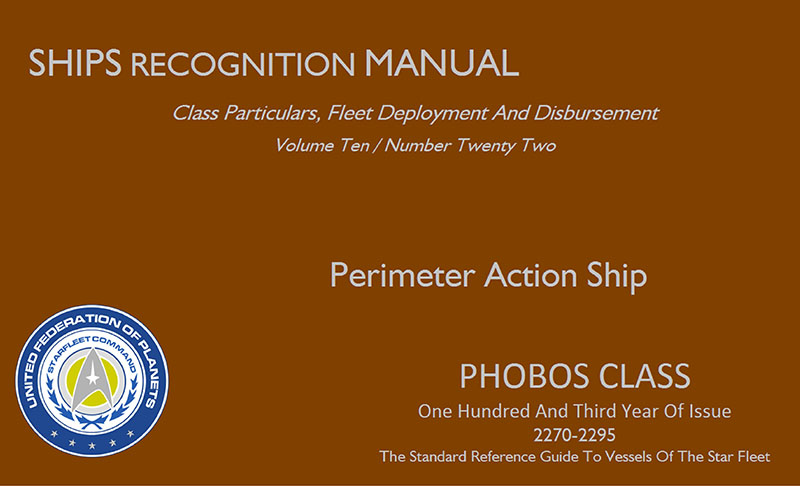There are 32 active users currently online.
Comments
Ship Recognition Manual:
Perimeter Action Ship
U.S.S. Phobos NCC-60600

Created by:
Michael A. Taylor
Copyright:
2021
With the new treaty that came with the accords signed with the Klingons, it had been hoped that a new era of peaceful space exploration would be forged. However it became clear that there were elements within the Klingon empire that were not going to let this stand. Old hatreds between the federation and the Klingon Empire went to deep to be forgotten. Though the Big D-7 heavy cruisers were too large to be manufactured by many of the smaller houses within the empire. The bird of prey was however readily available for production. The larger house with resources within the empire began to build them at a frighteningly large rate. The Bird of prey became the most feared weapon to federation shipping in the known universe.
To counter this, Starfleet R&D came up a design meant to counter the new threat. Fast and maneuverable, these ships would have to be able to keep up with large groups for close protection of the fleets and convoys. The Perimeter Action ships were born.
With the success of the Arbiter class. It was determined the perimeter action class lacked the ability to carry support craft for Starfleet’s primary goals, that of scientific exploration. A new class would be designed with this in mind. And thus the Phobos class was created.
Based on an older frigate the Loknar class, the Phobos had many design upgrades from the older ship. It incorporated a hangar bay at the stern of the saucer section. This removed much of the space allocated for an engineering section, but that was solved by moving the impulse engines further back and dividing the single engine into too separate engines with their own independent reactor cores. The ship was also given a lower deck torpedo bay allocated with three forward firing tubes and one independent aft tube. The ship is allocated with 9 phaser banks. 3 dual independent banks on the dorsal saucer section. 2 dual independent banks on the ventral saucer section. 2 single independent banks on the roll bar for the torpedo bay dorsal. And 2 independent banks facing aft on the stern. This limits the number of blind spots that a small fighter might utilize during space combat.
The ships dual impulse amplification crystals allow for double the power during high speed maneuvers at sub light speeds as well as giving the ship the ability to supply power from 2 sources to vital systems throughout the ship.
Though considered a combat vessel, the ship can still, when the hostilities between the Klingon empire and the federation come to their obvious conclusion, the ship can still operate as a light science platform and courier vessel allowing the class to outlive its combat needs well into the future.
Comments
- Click on any thumbnail to enlarge image. -


Download the PDF (3mb)

- View more Star Trek Blueprints and Schematics -



































